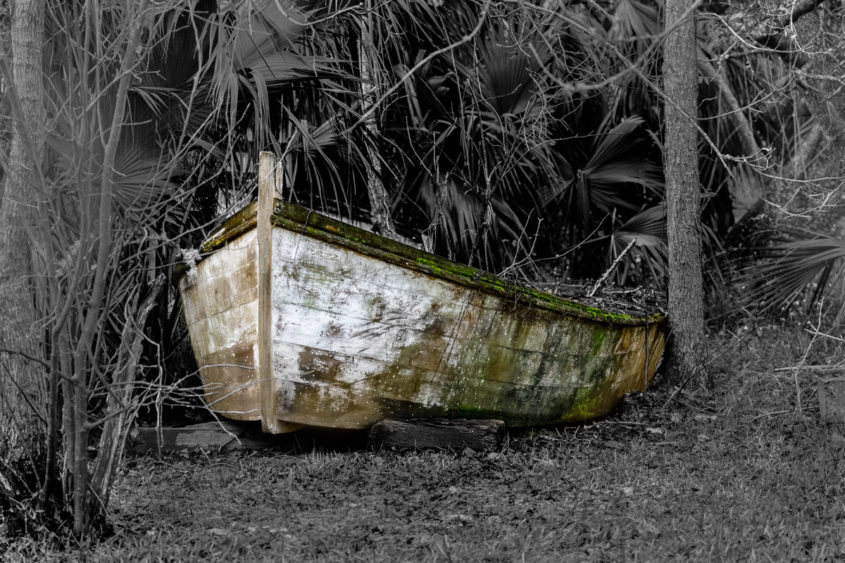A few weeks ago, I spent some time enjoying the sand and sunshine on St. George Island in Florida’s Big Bend coast area. Being relatively uninhabited this time of year, the island is very quiet and peaceful and really lets me get away from the everyday grind of life, at least for a little while.
One of the things I love to do when I visit St. George Island is to make the twenty minute drive into Apalachicola and spend time just walking around the town. Being a major player in the seafood industry, the air is filled with the sounds and smells of fishing boats and seafood companies, and wonderful photographic opportunities are everywhere.
My original plan was to get a sunrise shot of the Battery Park Pier just as the sun came over the horizon. I knew large sections of the pier had been heavily damaged by Hurricane Michael. I was surprised to find that, a year later, the pier had not been repaired. But, I suppose lumber is probably at a premium, and there are greater needs for it than replacing a pier. Disappointing, but certainly understandable.
With that plan nixed, I began walking along Water Street. Having been up and down this street several times in the past, I thought I had a pretty good idea of what I would see. But, I tried not to have any preconceived ideas of what I wanted to photograph. Rather, I wanted to see what was around me with a fresh view.
However, I did put my previous experience to good use by making a small change to my usual equipment setup. In the past, I had always walked around with either a 24-70mm or a 24-105mm lens attached to my camera. But, in many cases, those focal lengths just weren’t long enough to get the shot I wanted. So, for this excursion, I decided to go with my 100-400mm lens and see what happened.
When I spotted this old abandoned boat behind a chain-link fence, I knew I had made the right choice lens choice. By zooming to 142mm, I was able to closely frame the boat and crop out the two buildings on either side of the area.
Since I was handholding the camera, my main concern was preventing a soft or blurred image because of camera shake. To address this, I set the camera to shutter priority with the ISO set to Auto. Setting the shutter speed at 1/400 of a second, the camera automatically set the aperture at f/5 with an ISO of 6400.
Opening the file in Lightroom, I added a significant amount of contrast while reducing the highlights, raising the shadows, and adding some clarity. Because I saw this as a black and white rather than a color image, I did not make any adjustments to the vibrance or saturation sliders.
After processing the image in Lightroom, I opened the file in Photoshop to convert it to a black and white image. I wanted the boat to be the focal point of the picture, but the conversion to black and white resulted in a significant loss of contrast causing the boat to blend into the background. I tried several different things, but nothing seemed to work.
Then, I came up with a different idea. Instead of the entire image being black and white, I would leave the boat in color and convert just the background. This would eliminate the issue of lost contrast while ensuring the boat was the image’s focal point.
My method for doing this was pretty straight forward. I created a duplicate layer over the original color file. In the Layers panel, I clicked on the duplicate layer and reduced the saturation to zero. I then created a layer mask and, using the brush tool, removed the portion of the duplicate layer on only the boat revealing the colors from the underlying layer.
After flattening the layers, I used the Adobe Camera Raw filter to further adjust the highlights and shadows. Finally, using the burn tool to further reduce the background highlights and the dodge tool to lighten the boat, I created additional contrast between the boat and the background resulting in the final image above.

Pingback: Fishing Buoys | Bob Henry Photography